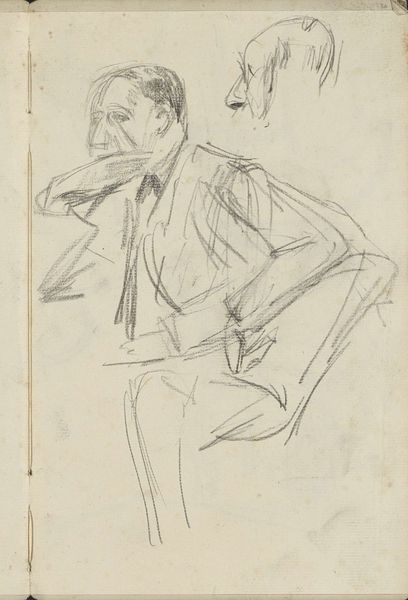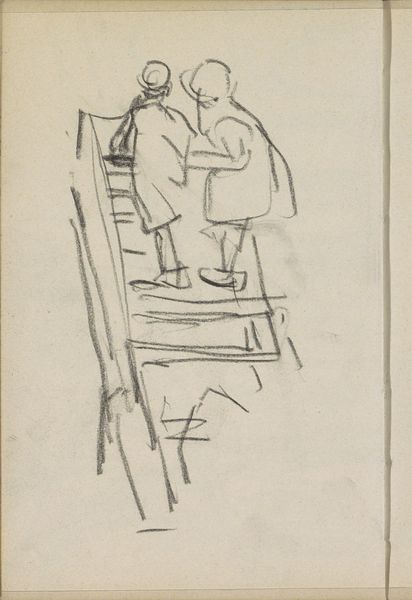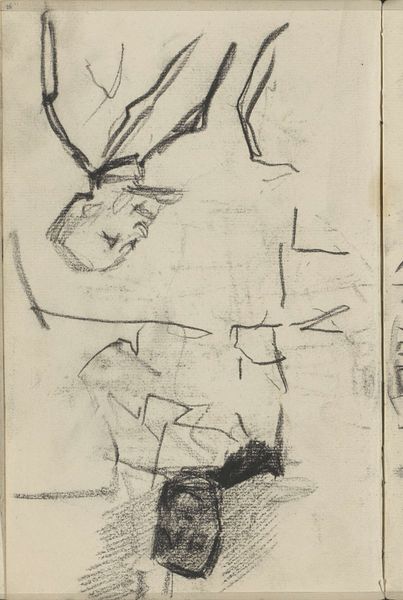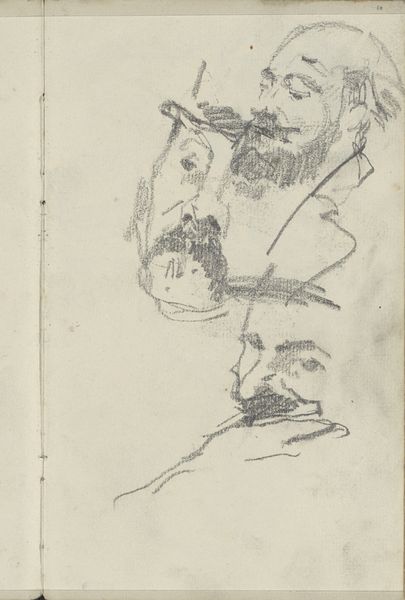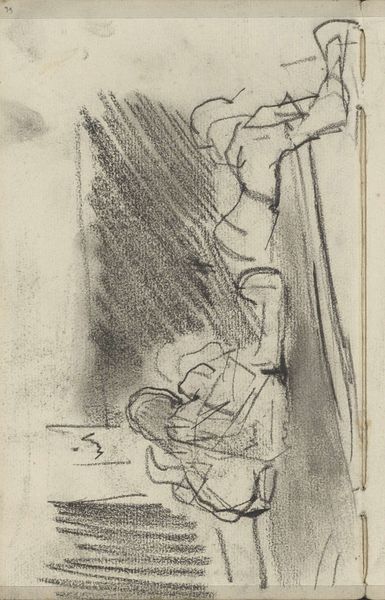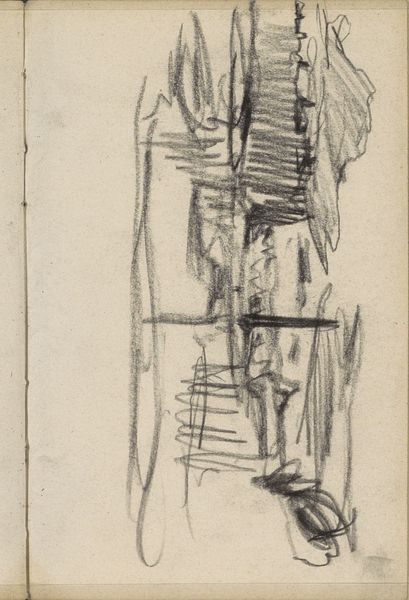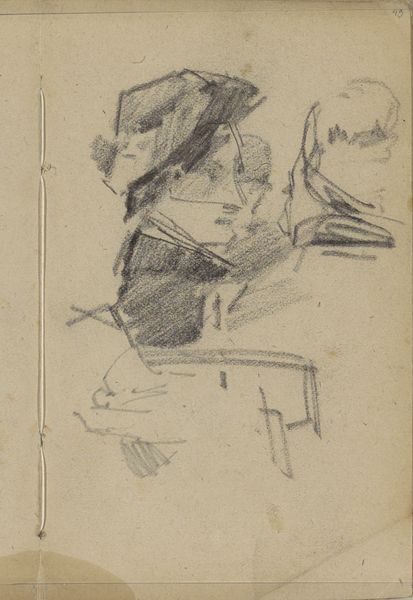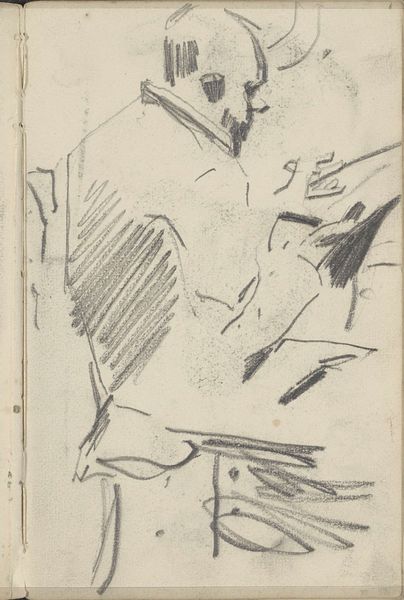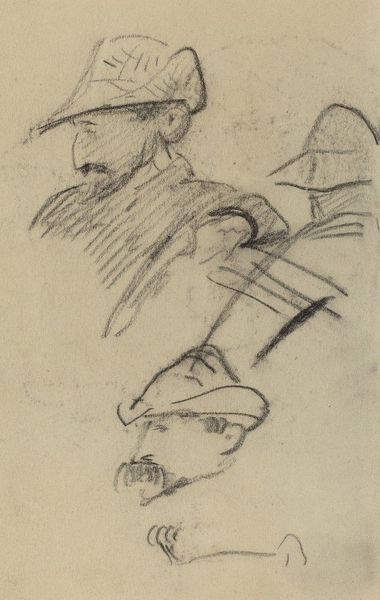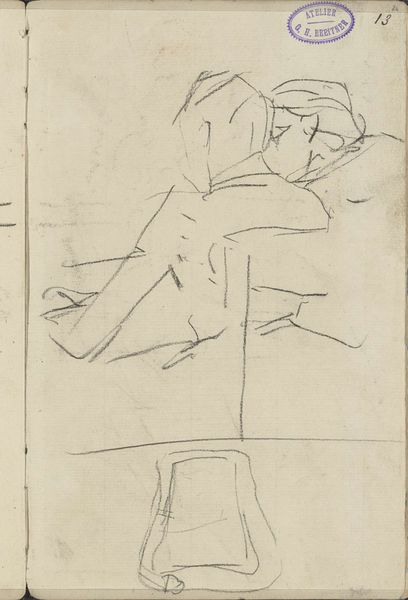
drawing, pencil
#
portrait
#
drawing
#
light pencil work
#
quirky sketch
#
impressionism
#
sketch book
#
personal sketchbook
#
idea generation sketch
#
sketchwork
#
pen-ink sketch
#
pencil
#
sketchbook drawing
#
storyboard and sketchbook work
#
sketchbook art
#
realism
Copyright: Rijks Museum: Open Domain
Editor: So, this is George Hendrik Breitner's "Bukkende man met pijp en een mannenhoofd," a pencil drawing from around 1883-1885 held here at the Rijksmuseum. It has this unfinished, raw quality that's quite appealing. What draws your eye in this piece? Curator: It's the ephemeral nature of the sketch that captivates. Breitner captures not just figures, but fleeting impressions. The pipe, for instance, becomes a symbolic gesture, almost ritualistic, linking the figure to a tradition, a past. What does the act of smoking signify to you in this image? Editor: Perhaps contemplation, a moment of pause in a busy life? Or is Breitner simply recording what he sees around him, unfiltered? Curator: Precisely! It reflects how cultural memory imprints itself on everyday actions. Consider how the act of smoking a pipe might be seen as an assertion of masculinity or belonging. The repetition of the head, almost like a double exposure, hints at psychological depth, perhaps self-reflection. Does that resonate with you? Editor: It does, especially the way the lower head is so much darker, more emphatic. Almost like a suppressed thought. Curator: The contrast highlights the multifaceted nature of identity, a common thread through many cultural depictions of the individual. Do you think Breitner intended that symbolism or was simply sketching? Editor: I suspect it's a bit of both – the artist's hand guided by his subconscious, drawing on shared cultural understandings, even unintentionally. Curator: That's the power of images, isn’t it? To hold these layers of meaning, whether consciously placed or organically emerging from our shared visual lexicon. It is interesting how his casual drawings still convey meaning today. Editor: Absolutely! I'll definitely be thinking about symbolism in sketchbooks now!
Comments
No comments
Be the first to comment and join the conversation on the ultimate creative platform.
